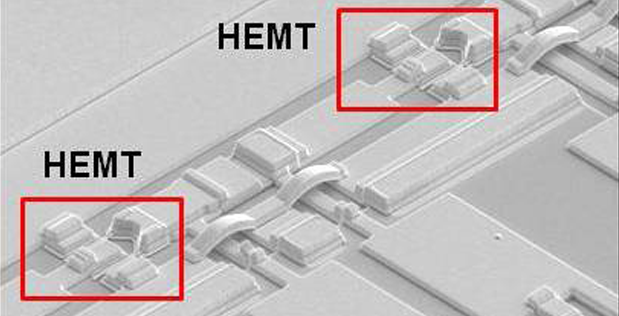Summary
Imaging, radar, spectroscopy, and communications systems that operate in the millimeter-wave (MMW) and sub-MMW bands of the electromagnetic spectrum have been difficult to develop because of technical challenges associated with generating, detecting, processing and radiating the high-frequency signals associated with these wavelengths.
To control and manipulate radiation in this especially challenging portion of the RF spectrum, new electronic devices must be developed that can operate at frequencies above one Terahertz (THz), or one trillion cycles per second.
Those higher frequencies are useful: they can carry more information than lower frequency signals and can open up new options in such arenas as secure communications and explosives detection. Until recently, however, limitations in transistor performance made it impossible to reliably drive solid-state electronics directly at these frequencies. Instead, engineers have relied on techniques for converting lower and more easily generated frequencies in chips to the higher ones associated with the sub-MMW range, which begins at frequencies above 300 GHz. But the devices required for that approach are larger and heavier than would be ideal and operate at lower power and with noisier outputs than desired—traits that have precluded widespread exploitation of the sub-MMW band.
To fully exploit the sub-MMW band will require monolithic microwave integrated circuits (MMICs) that can operate up to THz frequencies. And to make these THz MMICs (or “TMICs”) will require THz transistors with maximum oscillation frequencies (fmax) well above 1 THz. The objective of the Terahertz (THz) Electronics program is to develop the critical device and integration technologies necessary to realize compact, high-performance electronic circuits that operate at center frequencies exceeding 1.0 THz.
The program is focused on two critical THz technical areas, one of them well underway:
- Terahertz Transistor Electronics. This part of the program has aggressively developed multi-THz Indium Phosphide-based transistors (heterojunction bipolar transistors, or HBTs, and High Electron Mobility Transistors, or HEMTs) and has demonstrated TMICs operating up to and above 1 THz. In addition, THz low-loss inter-element interconnect and integration technologies have been developed, enabling compact THz transmitter and receiver modules to demonstrate wireless communications at 220 GHz, 670 GHz, and 850 GHz – hundreds of times faster than your cell phone.
- Terahertz High Power Amplifier Modules. This part of the program aims to develop compact, micromachined vacuum electronics devices to produce a significant increase of output power at frequencies beyond 1.0 THz and to radiate that energy at an antenna. Already, micromachined traveling wave tube amplifiers (TWTs) operating at 670 GHz and 850 GHz have been built and tested and have produced the highest linear output power available at these frequencies.
Successes in the THz Electronics program could catalyze the development of revolutionary applications by enabling coherent THz processing techniques such as THz imaging systems; sub-MMW, ultra-wideband, ultra-high-capacity communication links; and sub-MMW, single-chip widely-tunable synthesizers for explosive detection spectroscopy.

This program is now complete
This content is available for reference purposes. This page is no longer maintained.
